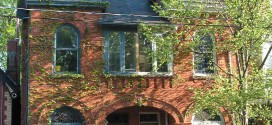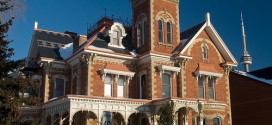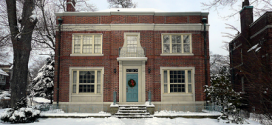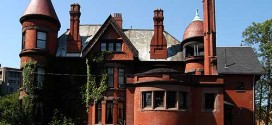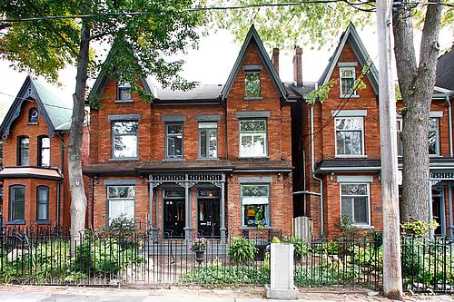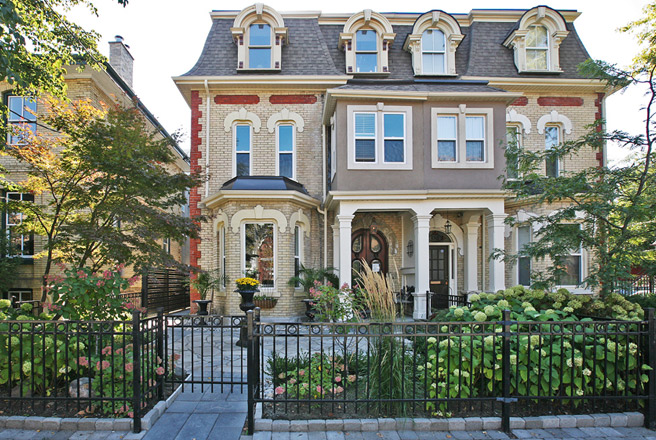The Romanesque Revival is an architectural style easily distinguished because of the semi-circular arch used for all door and window openings. This dominant feature is one of many elements that were derived from the 11th and 12th century. In North America, the Romanesque Revival gained prominence by the end of the 19th century. The style’s success during this time can be accredited to the American architect Henry Robert Richardson. In fact, not only did he help popularize the style, but he was also responsible for creating a secondary version of the architectural form – the Richardsonian. At first, Romanesque Revival …
Read More »Addy Saeed
Italianate Invasion – The Architecture of Cabbagetown
The Italianate style, also known as the Tuscan or Bracketed style, revisited the architecture of the Italian Renaissance in America during the 1840s. Historians consider this style to be a form of the Neo-Renaissance as well as a member of the picturesque movement. For Canada, this movement gained momentum around the same time as confederation. All across the country homes were being built in reflection of this Italianesque form. Toronto, specifically, has many preserved locations of Italianate architecture. One example of this can be found at 397 Carlton Street, Toronto (James Reeves House). The Italian villa became a popular model …
Read More »Arts and Crafts in Cabbagetown
The Arts and Crafts movement is characterized by its lack of style. Often referred to as the Craftsman movement, this style was used as an expression of distaste for the industrial revolution. The simple design of the Arts and Craft was intended to provide a better living environment for the working class. The most prevalent form of Arts and Crafts found in Cabbagetown is a “Tuscan” variation, one that is proudly plain. These homes are usually semi-detached and can be identified by their front porch and Tuscan columns. The non-gabled version, one slightly less popular, includes a bay just above …
Read More »Beaux Arts in the City: An Architectural Influence for Cabbagetown
The English Translation for the word “Beaux” is “Fine,” which is a suitable description for the lavish style embraced during the American Renaissance (1890-1920). The Beaux Arts architecture began in Paris as an expression of the non-classical academics, but by the time the style reached North America, architects began to stray from these ideals. In Canada, Beaux Arts is a common style for public and legislative buildings. For instance, the following locations in Toronto display a traditional Beaux Arts form: The Hockey Hall of Fame The Royal Alexandra Theatre The Dominion Public Building The Canada Life Building Residential examples are …
Read More »Queen Anne of Cabbagetown
The Queen Anne is said to be the most ornate Victorian form. In Canada, between the early 1880s and late 1890s, this style was a very popular choice for wealthy residents looking to build a new home. Today, there are three notable locations of the Queen Anne style in Toronto: 139 Seaton Street 297 Carlton Street 314 Wellesley Street Other examples of Queen Anne appear sporadically in areas like The Annex and Rosedale. The Queen Anne movement began in England almost two decades before ever reaching Canada. During this time many people were heavily influenced by medieval England and …
Read More »Gothic Revival in Cabbagetown
Although created in the early 18th century, the Gothic Rival style had been primarily used during the 19th century. By this time, Victorians had grown bored of their Gregorian homes and yearned for more colour and decoration. Initially, this style was favoured by successful industrialists in England, but by the late 19th century, entire suburbs began to resemble the Gothic Revival: Pointed arches Ribbed vaults Flying buttresses Spacious arcades, galleries, and clerestory stained glass windows Quatrefoil and clover-shaped oriel windows Pinnacles Grouped chimneys The Gothic Revival reached popularity in North America shortly after Andrew Jackson Davis’ 1837 release, Rural Residences, …
Read More »Cabbagetown’s Second Empire
Developed during the age of Napoleon III’s Second Empire in France, and appropriately named after its origins, the Second Empire architectural style was introduced to Canada in the late 19th century. Although best suited for large public buildings, Second Empire structures were used residentially as well. Many wealthy, famous individuals during this time requested that their homes be built in accordance to this lavish style. Due to the boxy, symmetrical nature of the Second Empire it is easily mistaken for an Italianate – but with one major difference, the mansard roof. Because the roof is a dominant feature, the Second …
Read More »A Victorian Influence: Cabbagetown
Although Victorian architecture began in the United Kingdom, the style moved swiftly into North America during the 19th century. While many cities across Canada have preserved housing from this era, Toronto is one of the largest areas where Victorian architecture prevails. Cabbagetown, specifically, is Toronto’s most continuous residential area that proudly displays a variety of Victorian structures. “Victorian” simply refers to Queen Victoria’s reign in England; however, the era is often considered to encompass the period between the Civil War and World War One. This definition may seem broad but this is because Victorian architecture is an umbrella category for …
Read More » Cabbagetown Info Events, reviews and what's happening in Cabbagetown, Toronto
Cabbagetown Info Events, reviews and what's happening in Cabbagetown, Toronto
